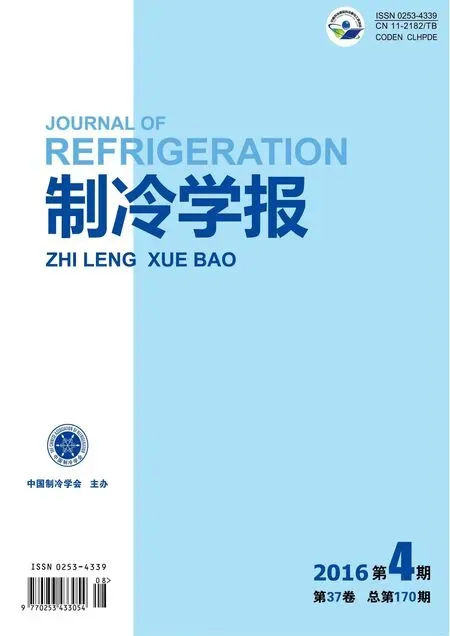一种带有新型分水器的储热水箱分层特性的实验研究
王崇愿 张 华 王子龙
(上海理工大学制冷及低温工程研究所 上海 200093)
一种带有新型分水器的储热水箱分层特性的实验研究
王崇愿张 华王子龙
(上海理工大学制冷及低温工程研究所上海200093)
搭建了带有新型分水器的储热水箱分层特性测试的实验台,测试并绘制了在水箱初始温度50 ℃,进水温度20 ℃,流量1.18 L/min、3.19 L/min、5.20 L/min时,水箱各层温度随时间变化的曲线。结果显示,流量越大,温度曲线突变段的斜率越大,分层破坏越明显。并在热力学第一定律、热力学第二定律的基础上,用体积、能量分析和分析的评价指标对水箱的分层特性进行了研究,结果显示,在流量为1.18 L/min、3.19 L/min、5.20 L/min时的取出效率分别为93.7%、95.7%、96.7%,用能效率分别为98.2%、95.7%、92.3%,三组流量都具有较高的取出效率和用能效率,无量纲时间为0.7时,无量纲分别为13.3%、14.6%、17.6%,大流量相较于小流量分层效果更差。
太阳能;分层;储热水箱;分水器;用能效率;无量纲
储热水箱在太阳能集热系统、热泵热水器系统、电加热热水器中有着广泛的应用,是负荷管理和节能的重要设备[1]。在一个家用电加热水箱中,用电加热给水箱中的水加热并以显热的形式储存,从水箱下部进入的冷水将储存的热能从水箱上部挤出。在水箱中,由于密度的差异,存在着温度分层,密度较小的热水上浮,而密度较大的冷水下沉,在两者之间存在着混合层,称为斜温层[2]。水箱的温度分层能够使得冷热水的掺混降低并提高热水出水量。
韩延民等[3]在文章中提到,对于温度分层的影响因素,大多考察理查逊数(Ri=Gr/Re2)的影响。它是表征浮升力和流动中的惯性力之比的量度,Ri≤3.6时水箱进口结构对温度分层产生影响。也就是说,在正常进口Ri数较小时通过增加分水器,改变进水口形状,改变进水方向和流速等可以有效地提高水箱的温度分层效果。李阳等[4]对长方体水箱安装开槽型进口和直接进口,分析对比了5 L/min、10 L/min、15 L/min流量下不同进口结构水箱用能效率的变化情况。Mari E G等[5]在文章中对比了烧结青铜锥形进口和常规的肘型进口对水箱分层的影响。Li S H等[6]研究了直接进口、开槽型进口以及淋喷头式进口对水箱性能的影响,结果发现,开槽型进口能在水箱中实现更好的分层,相同流量下具有最高的用能效率。此外,中外的学者分别提出了不同的指标对水箱的分层特性进行表征,如MIX number[7-8]、Str数[9]、斜温层厚度[10]等。

1 实验台及测试过程
储热水箱分层特性测试实验台由储热水箱、稳压水箱、变频水泵、PPR连接管路、球阀、手动调节阀组成,图1为实验系统原理图。储热水箱高60 cm,直径35.7 cm,内部容积60 L,内部插有1.5 kW电加热,桶壁沿高度方向布置14根铂电阻,以测试水箱各层温度。水箱底部为进水口,进水口焊接分水器,具体结构如图2、图3所示,进水口布置1根铂电阻以测试进水温度。水箱顶部出水,出水口布置1根铂电阻,以测试出水温度。从水箱出水口到进水口依次标号1-16,铂电阻采用上海自动化仪表三厂A级铂电阻,精度0.15 ℃。水箱四壁及进出水口用保温材料保温,近似可以认为与环境无换热。
实验步骤:
1)调节进出水流量,阀1、2、3、4、5均打开,保证出水口有水流出,即保证水箱满水。关闭阀4,调节变频水泵转速和手动调节阀开度使出水流量达到实验要求值,流量采用称重法测量,需要注意应保证稳压水箱的液位基本稳定,减少液位对流量的影响。
2)关闭阀1、3,开启电加热,将水箱内温度加热到50 ℃左右,此时由于水的密度不同造成温度不均,上层温度较高,下层温度较低,需要进行循环以使得水箱温度均匀。
3)阀3、4打开,阀5关闭,开启变频泵使水箱内的水进行内部循环,逐步使得水箱内的温度趋于一致,如果温度较50 ℃低,需要进一步开启电加热。最终使得水箱内部温度上下比较均匀地达到50 ℃,实验时在±0.3 ℃以内。
4)水箱各个位置的铂电阻将温度传送到温度采集仪安捷伦34970上,安捷伦与电脑进行通讯,将测得的温度值显示在数据采集软件上。打开数据采集软件,打开阀1、5,关闭阀4,同时记下时间,以方便查阅最终数据。用称重法进行实际流量的测量,保持稳压水箱液位的稳定,将多次测量测得的流量进行平均作为最终流量。待水箱出水温度下降到接近进水温度时,停止数据采集,进行数据的保存和分析。
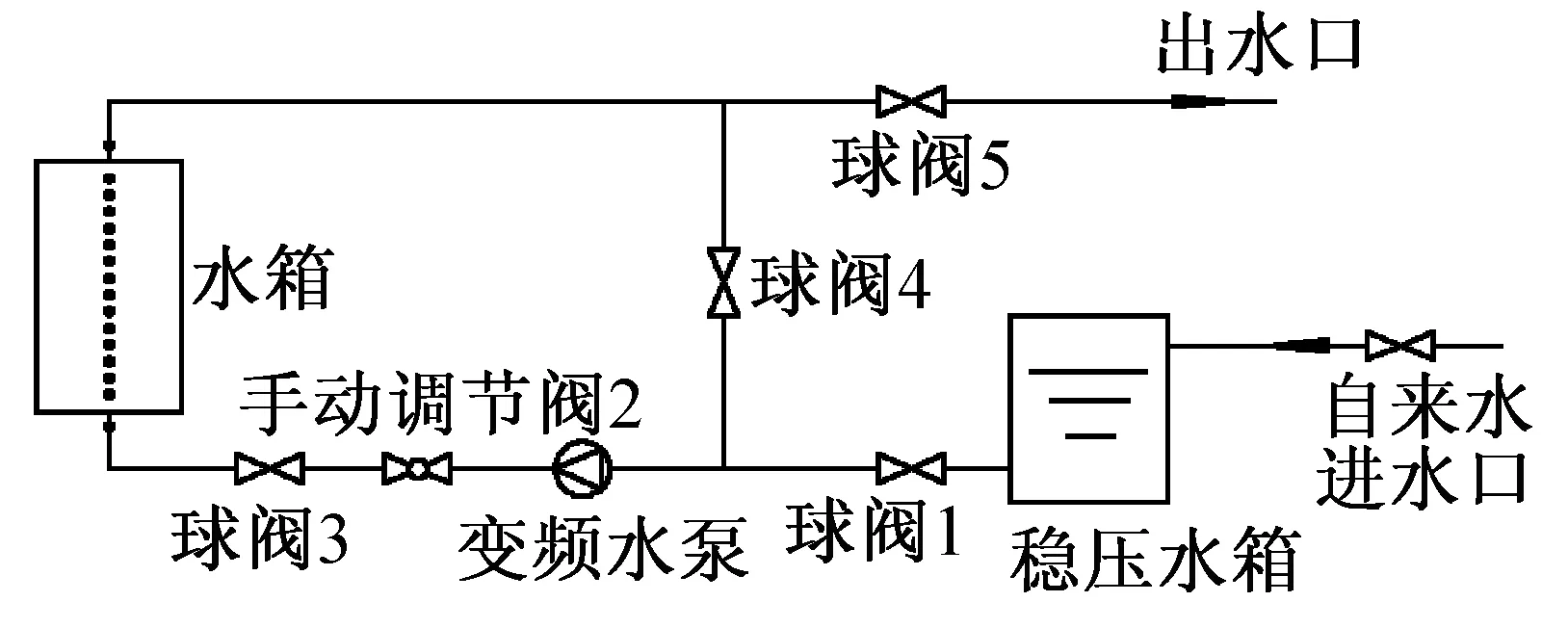
图1 实验系统原理图Fig.1 Schematic of experimental system
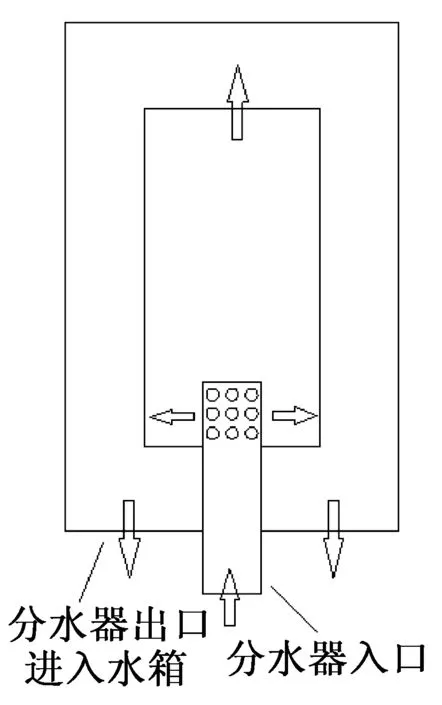
图2 分水器结构示意图Fig.2 Schematic of the stratifier structure
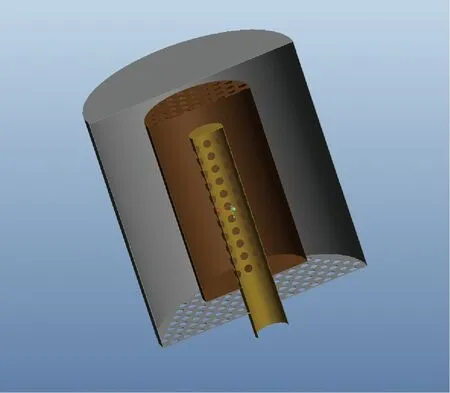
图3 分水器结构三维图Fig.3 The three-dimensional structure of the stratifer
2 实验数据分析
2.1 温度-时间曲线
图4所示为当流量分别为1.18 L/min、3.19 L/min、5.20 L/min时水箱不同位置测点温度随时间的变化图。三张图显示了相同的规律,不同的温度测点在经历各自不同的时间后都会出现温度的急剧下降这一突变过程,这里的突变指的是,在安捷伦温度采集仪两次采集点(间隔10 s)温度梯度出现较大变化的现象。
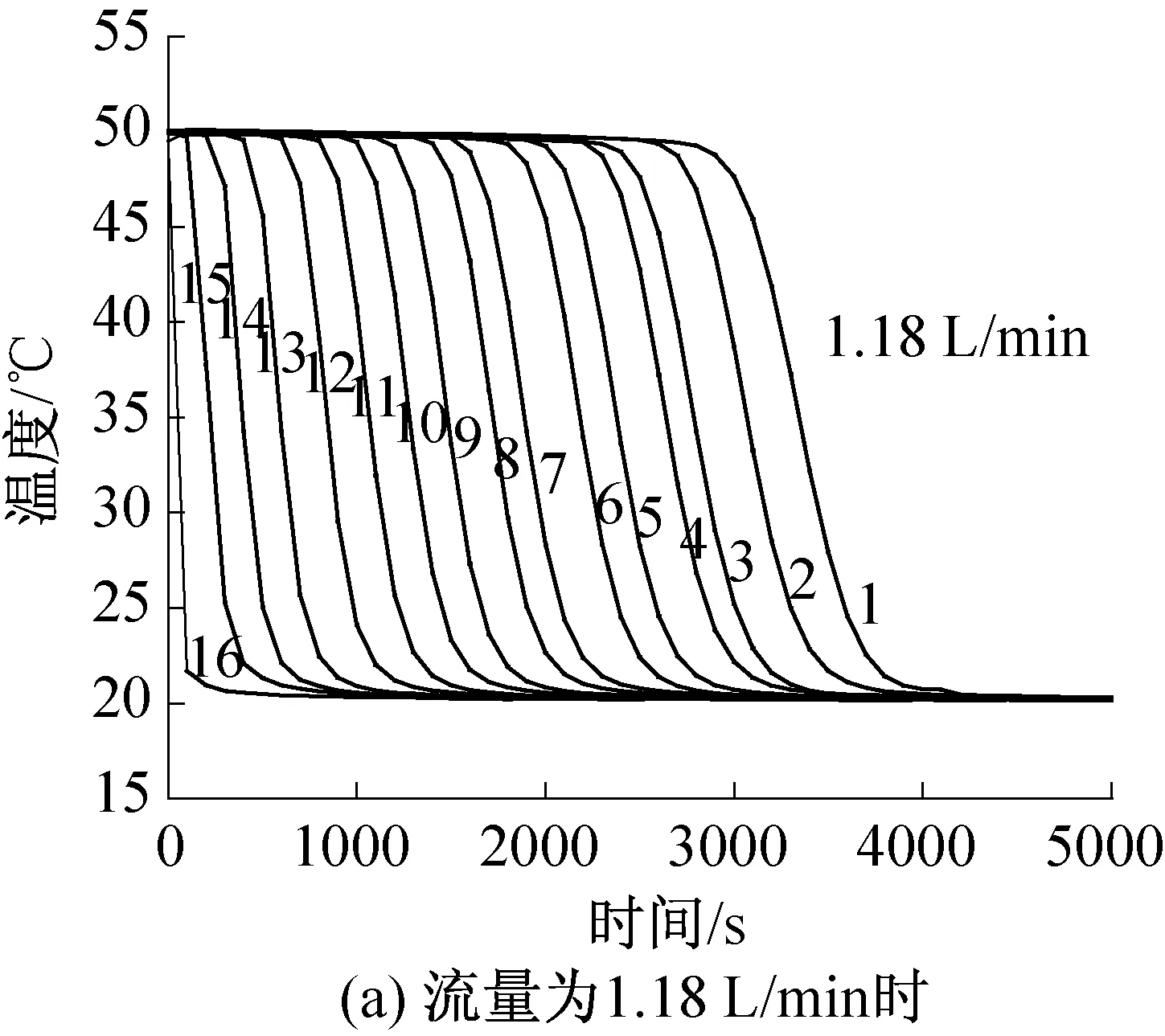
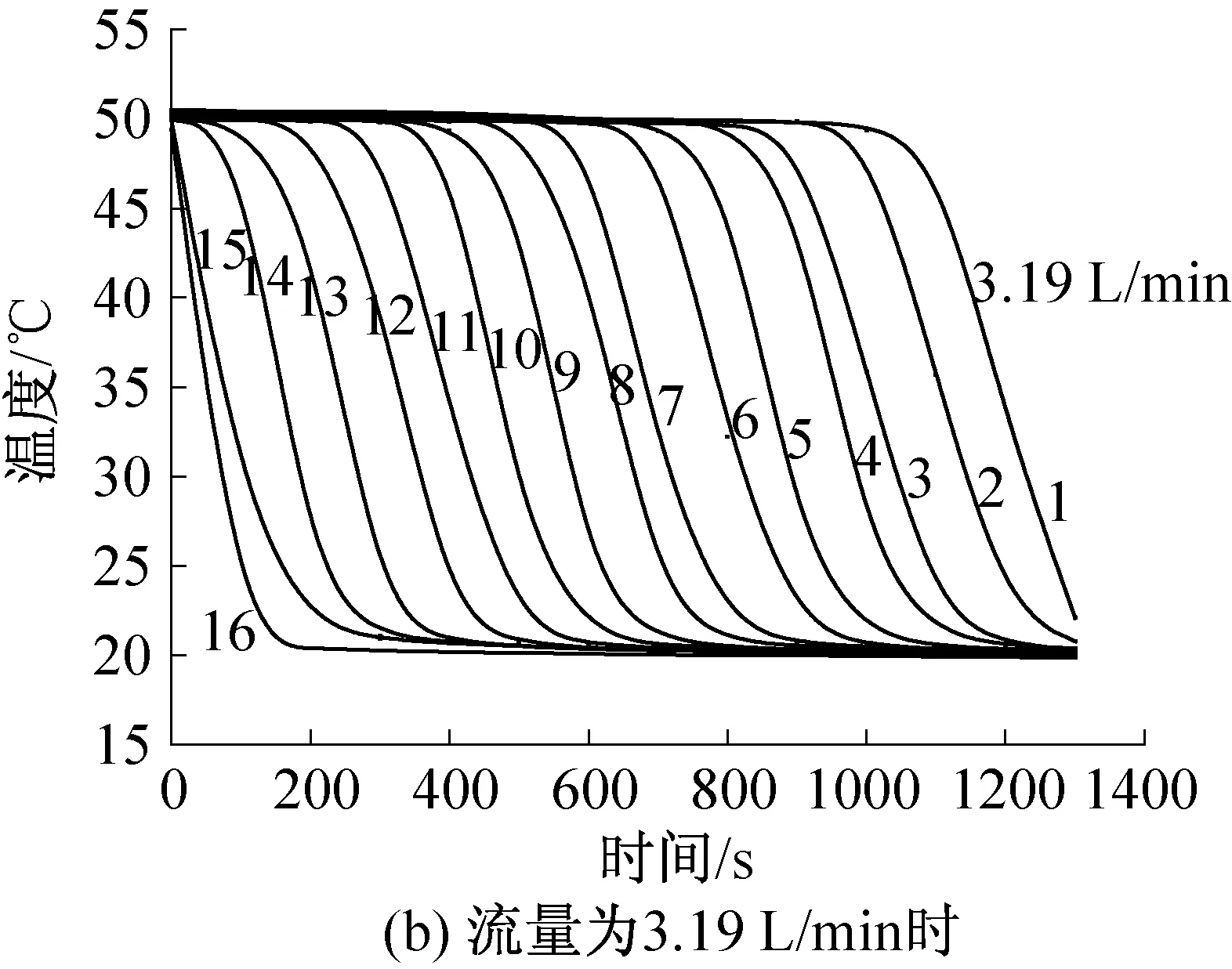
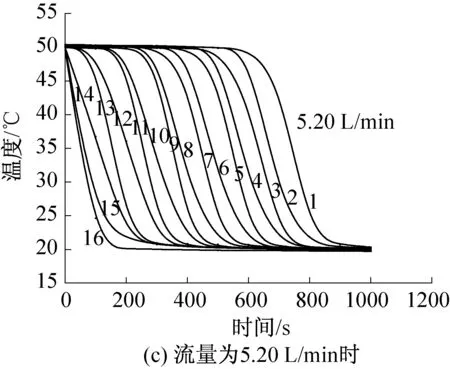
图4 水箱不同位置测点温度随时间变化图Fig.4 Variation of temperature in each layer with time

图5 三种不同流量水箱不同温度测点温度随时间变化图Fig.5 Variation of temperature in each layer with time at different flow rate
图5为在1.18 L/min、3.19 L/min、5.20 L/min三组不同流量下,水箱出水口、水箱中部、水箱进水口三个位置温度随时间的变化在一张图上的显示。由图可以看出,进水口测点,三组流量具有几乎相同的曲线,在水箱中部和出水口,相同时间时,小流量具有更高的温度。观察出水口温度曲线(1测点)可以发现,5.2 L/min具有更大的斜率,这显然是可以理解的。大流量进水比小流量更容易造成冷热水掺混,加剧水箱分层的破坏。
2.2 温度-无量纲时间曲线
图6所示为水箱不同温度测点随无量纲时间的变化图,定义无量纲时间:
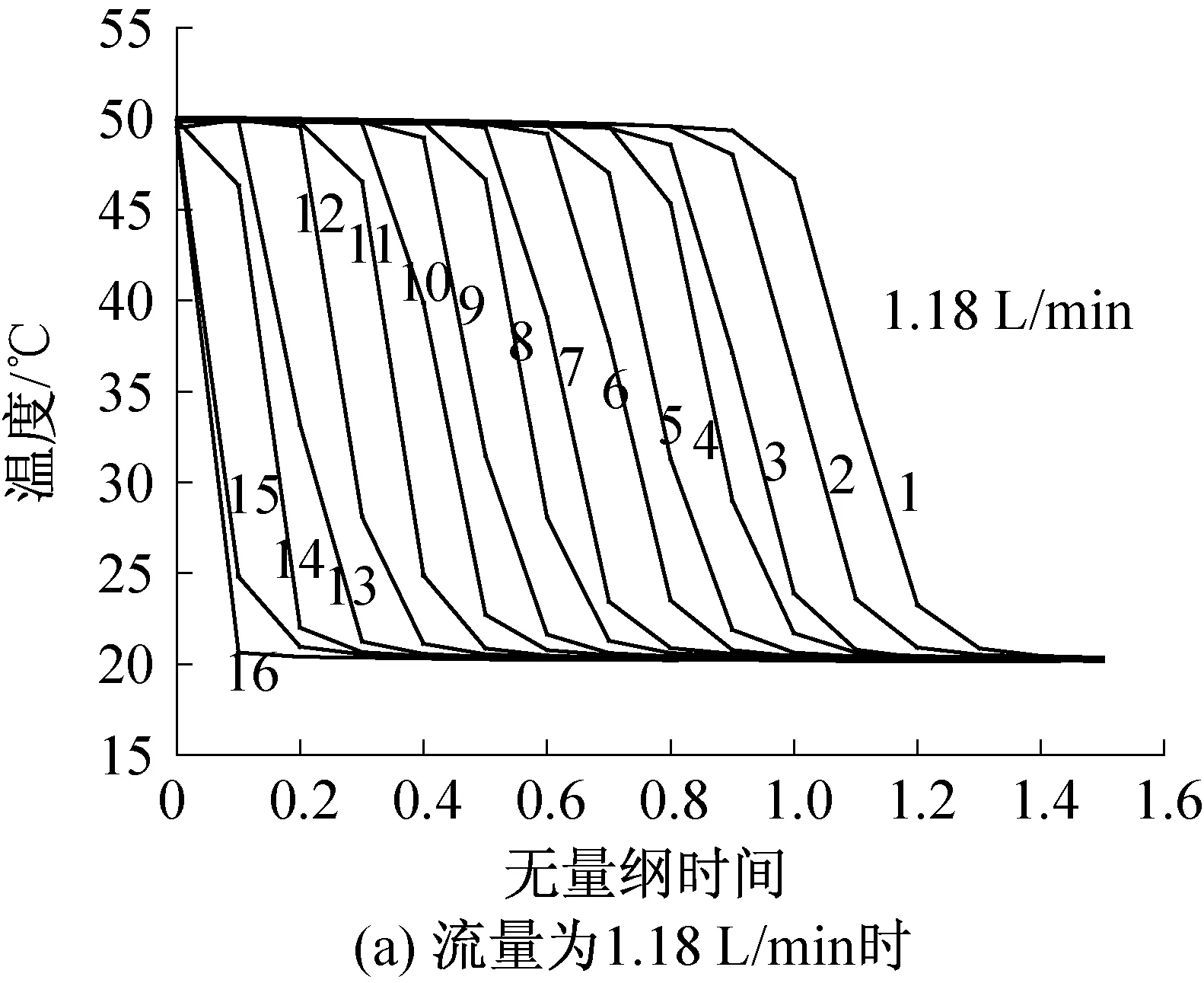
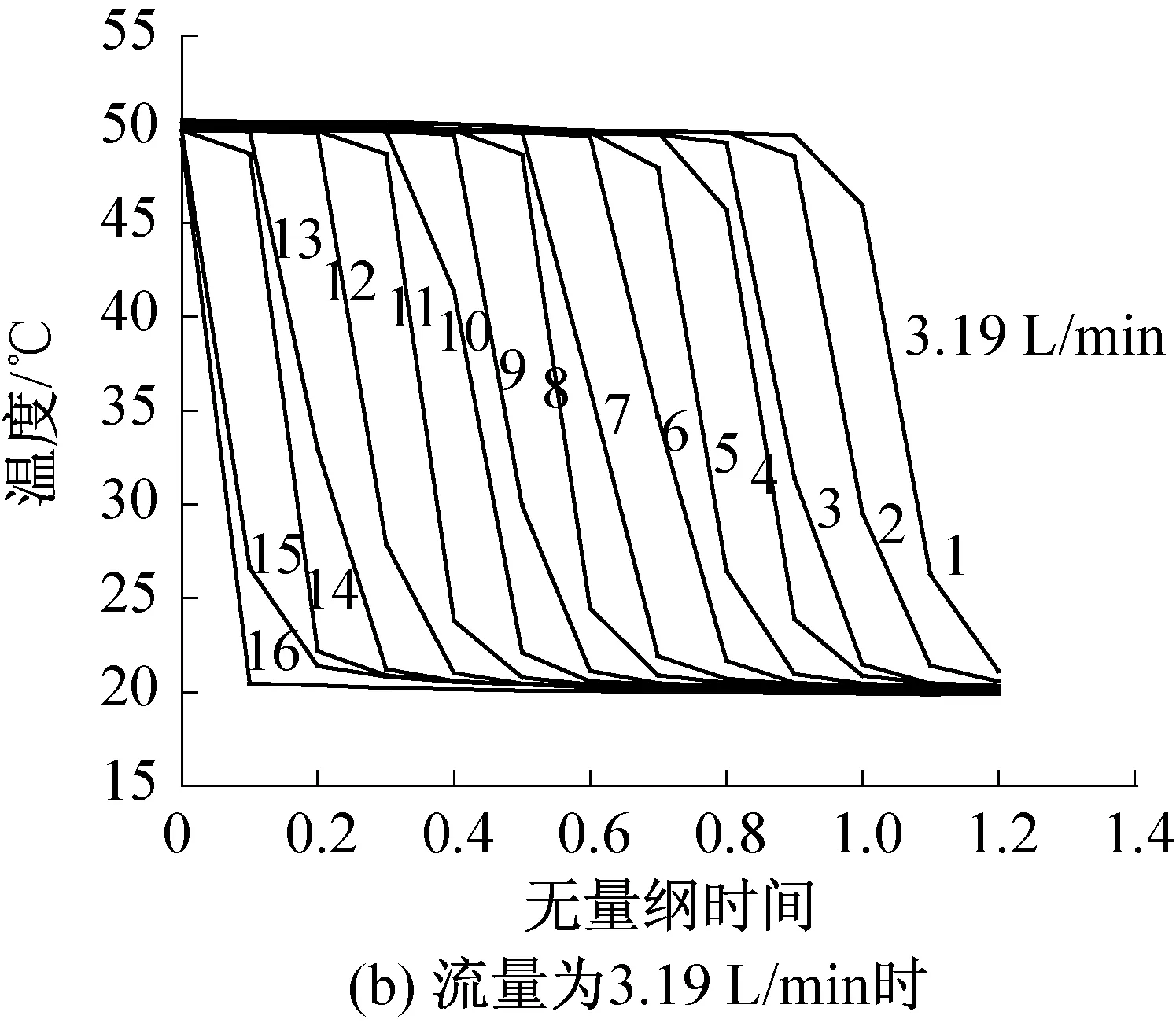
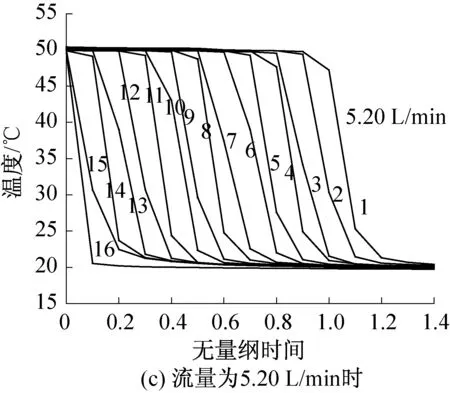
图6 水箱不同位置测点温度随无量纲时间变化图Fig.6 Variation of temperature in each layer with dimensionless time

(1)
式中:t为从放水瞬间开始所经历的时间,min;T为在理想活塞流情况下,将水箱内的水全部置换一遍所需时间,min。理想活塞流是指冷水进水过程就像活塞运动,逐渐将热水推出,过程没有掺混和换热。
(2)
式中:V为水箱容积,L;Q为进水流量,L/min。
由图可以发现,三组不同流量的温度-无量纲时间曲线近乎相同,出水温度急剧变化的拐点也都是出现在t*=0.9~1.0之间。
2.3 取出效率
Hegazy A A[11]在文章中定义了取出效率(extraction efficiency)
(3)

取出效率表示的是水箱进出水温差下降至某一规定值所经历的时间与理想活塞流一个置换时间的比值。其中,10%的规定是一个比较主观的值,其他文章中也有规定为20%。在本文中,用出水水温下降1 ℃计算取出效率。1.18 L/min时,经历2860 s,出水水温由50 ℃下降至49 ℃,取出效率为93.7%;3.19 L/min时,经历1080 s,出水水温由50 ℃下降至49 ℃,取出效率为95.7%;5.20 L/min时,经历670 s,出水水温由50 ℃下降至49 ℃,取出效率为96.7%。对于不同的流量,取出效率差别不大,因而用以体积形式给出的取出效率来表征储热水箱的温度分层特性的合理性是值得商榷的。
2.4 用能效率
用能效率(discharge efficiency)是一个随时间变化的值,它被定义为从水箱中累计出水所含能量与水箱初始所含能量之比[12]:
(4)
(5)
(6)
式中:ηd(t)为用能效率;Eout(t)为累计出水所含能量,J;Est(t=0)为水箱初始所含能量,J;ρ为水的密度,kg/m3;v为体积流量m3/s;cp为水的定压比热容,J/(kg·K);Tout为出水温度, ℃;Tin为进水温度, ℃;n为以每根铂电阻为中心,将水箱分成的块数,n=16;Tj为第j块温度, ℃。
Zurigat Y H等[13]在文章中定义用能效率时,所取的时间为出水口与进水口温差下降20%时所经历的时间。本文则计算的是t*=1时,各个流量下的用能效率。计算时,Eout(t)用出水温度的曲线所围面积计算。结果显示,在t*=1时,1.18 L/min,用能效率为98.2%;3.19 L/min,用能效率为95.7%;5.20 L/min,用能效率为92.3%。用能效率随着流量的增加呈现下降的趋势,但都保持在较高的用能效率。

(7)

(8)
(9)
式中:E为水箱总能量,J;n为以铂电阻为中心,将水箱分成的块数,n=16;mi为每一块的质量,kg;cp为水的定压比热容,J/(kg·K);Ti为每一块的温度,以绝对温度计算,K;T0为参考温度,取T0=293.15 K。
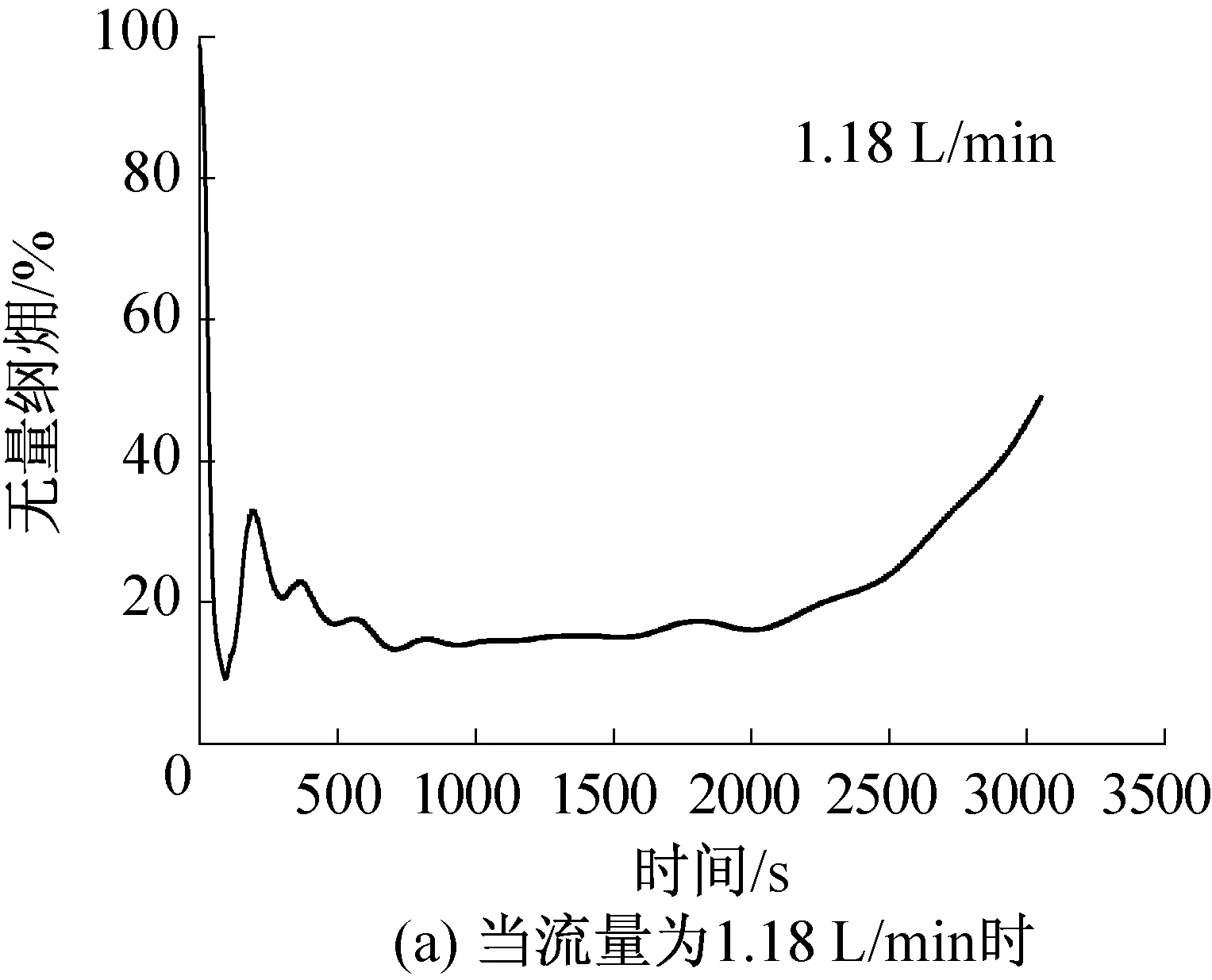
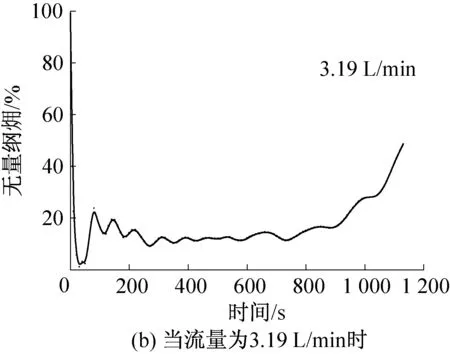
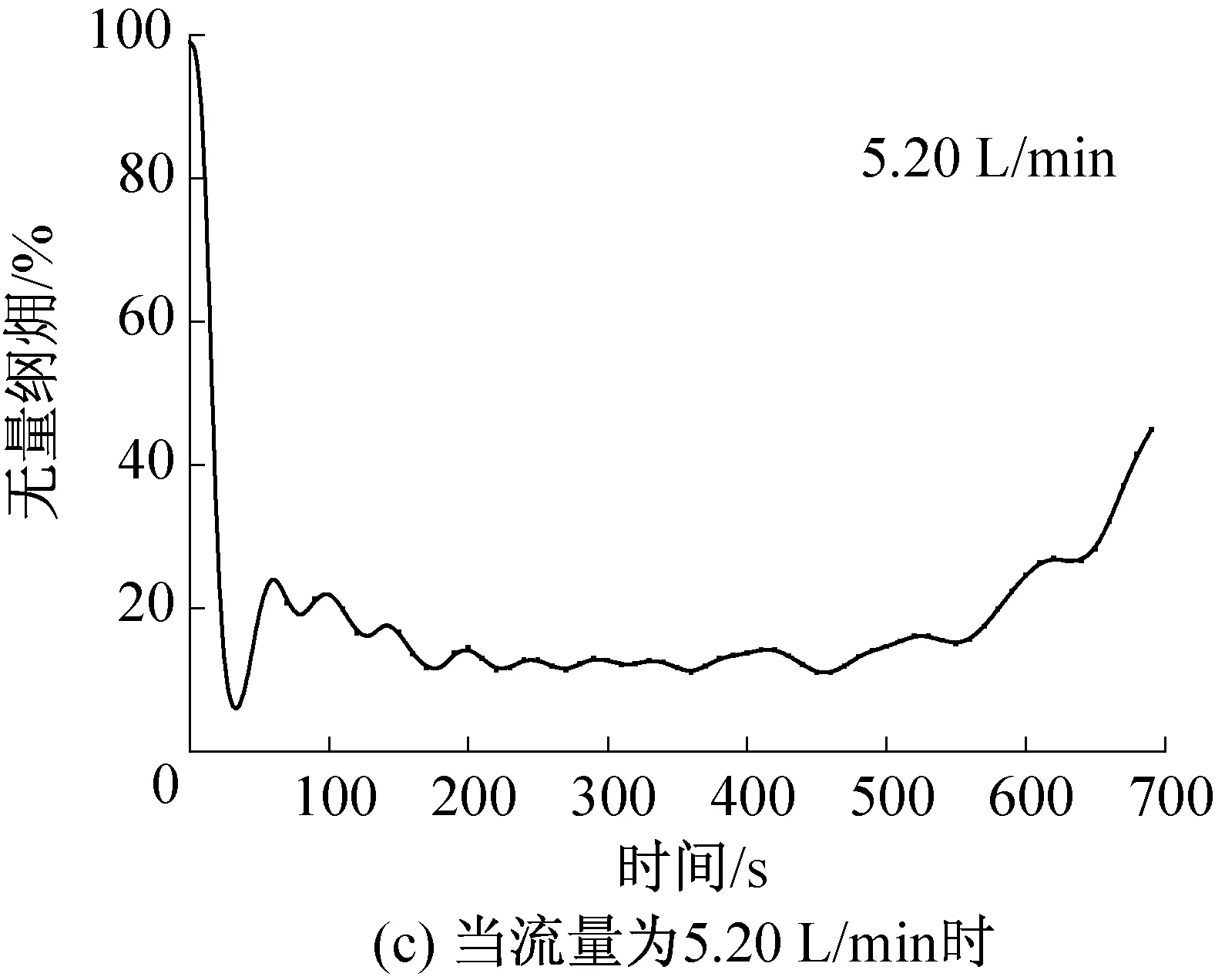
图7 无量纲随时间变化图Fig.13 Variation of exergy efficiency with time
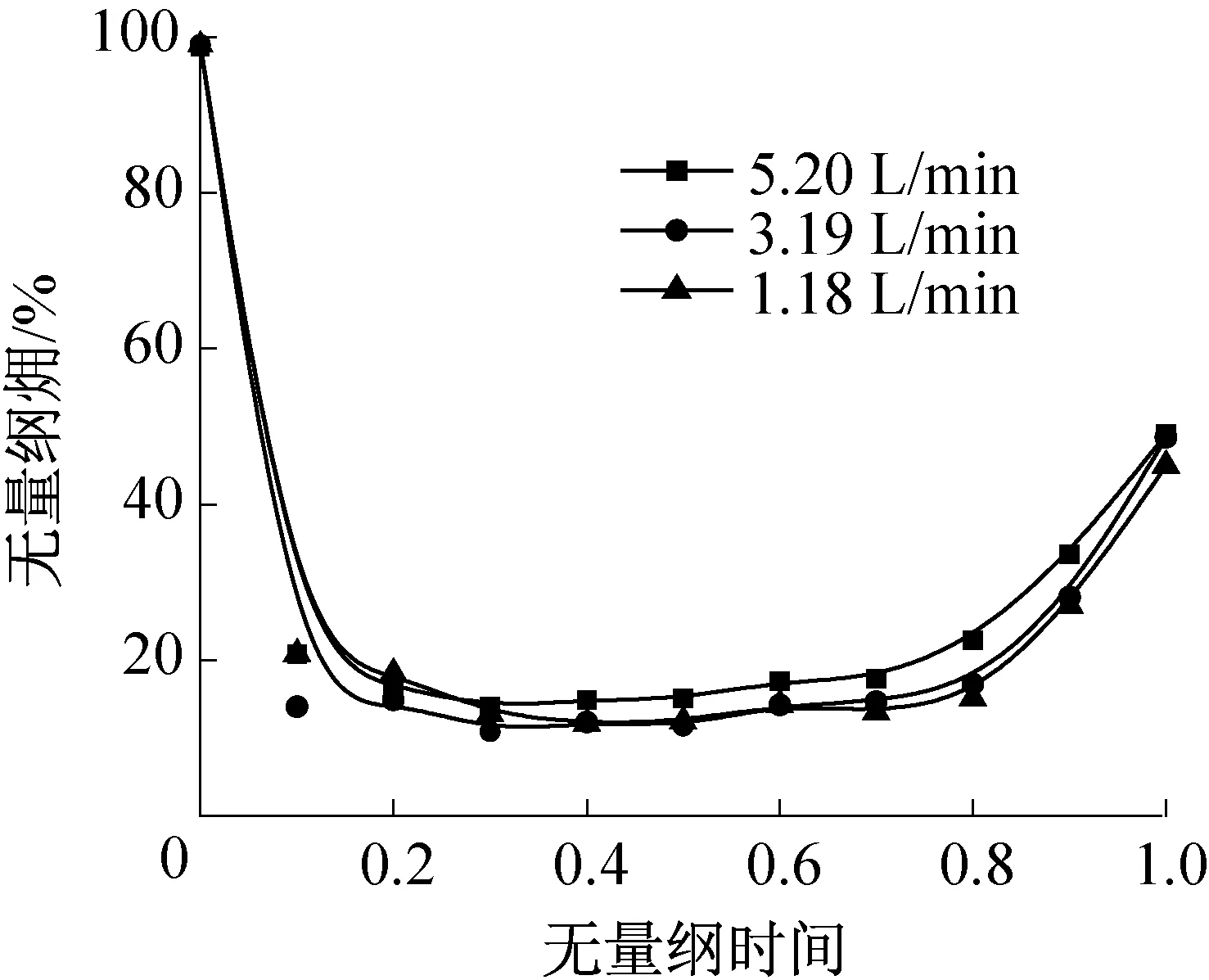
图8 三种流量无量纲随时间变化图Fig.8 Variation of exergy efficiency with time at different flow rate
3 结论

[1]Yaici W,Ghorab M,Entchev E,et al.Three-dimensional unsteady CFD simulations of a thermal storage tank performance for optimum design[J].Applied Thermal Engineering,2013,60(1/2):152-163.
[2]Seara J F,Uhia F J,Sieres J.Experimental analysis of a domestic electric hot water storage tank. Part II: dynamic mode of operation[J].Applied Thermal Engineering,2007,27(1):137-144.
[3]韩延民,王如竹,代彦军,等.卧式热分区太阳能水箱内的贮热性能分析及实验研究[J].太阳能学报,2008,29 (3):277-282.(HAN Yanmin,WANG Ruzhu,DAI Yanjun,et al.Analysis and experimental studies on heat storage performance within a horizontal thermal partition solar water tank[J].Acta Energiae Solaris Sinica,2008,29(3):277-282.)
[4]李阳,李舒宏,赵苗,等.进口结构对水箱性能影响的模拟及实验研究[J].制冷学报,2013,34(5):13-16.(LI Yang,LI Shuhong,ZHAO Miao,et al.Simulation and experimental investigation of the influence on the performance of tanks with different inlets[J].Journal of Refrigeration,2013,34(5):13-16.)
[5]Mari E G,Gasque M,Colomer R P,et al.A new inlet device that enhances thermal stratification during charging in a hot water storage tank[J].Applied Thermal Engineering,2013,61(2):663-669.
[6]Li S H,Zhang Y X,Li Y,et al.Experimental study of inlet structure on the discharging performance of a solar water storage tank[J].Energy and Buildings,2014,70(1):490-496.
[7]Andersen E,Furbo S,Fan J H.Multilayer fabric stratification pipes for solar tanks[J].Solar Energy,2007,81(10):1219-1226.
[8]Davidson J H,Adams D A.A coefficient to characterize mixing in solar water storage tanks[J].Journal of Solar Energy Enineering,1994,116(2):94-99.
[9]Fernandez-Seara J,Uhia F J,Sieres J.Experimental analysis of a domestic electric hot water storage tank.Part II:dynamic mode of operation[J].Applied Thermal Engineering,2007,27(1):137-144.
[10] Musser A,Bahnfleth W.Evolution of temperature distributions in a full-scale stratified chilled water storage tank[J].ASHRAE Transactions,1998,104 (1):55-67.
[11] Hegazy A A.Effect of inlet design on the performance of storage-type domestic electrical water heaters[J].Applied Energy,2007,84(12):1338-1355.
[12] Han Y M,Wang R Z,Dai Y J.Thermal stratification within the water tank[J].Renewable and Sustainable Energy Reviews,2009,13(5):1014-1026.
[13] Zurigat Y H,Ghajar A J.Thermal energy storage systems and applications[M].New York:John Wiley &Sons,2002:264-270.
[14] Njoku H O,Ekechukwu O V,Onyegegbu S O.Analysis of stratified thermal storage system: an overview[J].Heat Mass Transfer,2014,50(7):1017-1030.
[15] Consul R,Rodryguez I,Perez-Segarra C D,et al.Virtual prototyping of storage tanks by means of three-dimensional CFD and heat transfer numerical simulations[J].Solar Energy,2004,77(2):179-191.
[16] Farmahini M.Investigation of four geometrical parameters on thermal stratification of cold water tanks by exergy analysis[J].International Journal of Exergy,2012,10 (3):332-345.
[17] Rosen M A,Tang R,Dincer I.Effect of stratification on energy and exergy capacities in thermal storage systems[J].International Journal of Energy Research,2004,28(2):177-193.
About the corresponding author
Wang Chongyuan, male, master, Institute of Refrigeration & Cryogenics, University of Shanghai for Science and Technology,+86 21-55275542, E-mail:wangchong_yuan@126.com. Research fields: water storage tank.
Experimental Analysis of the Stratification Characteristics of a Water Storage Tank with New Stratifier
Wang ChongyuanZhang HuaWang Zilong
(Institute of Refrigeration and Cryogenics, University of Shanghai for Science and Technology, Shanghai, 200093,China)
Test rig is established to measure the stratification characteristics of a water storage tank with new stratifier. When the initial temperature of the tank is 50 ℃ and the inlet temperature of the water is 20 ℃, the temperature of each layer in the tank is measured when the flow rate is 1.18 L/min,3.19 L/min,5.20 L/min respectively. The results show that, when the larger the flow rate is, the larger is the slope of the sudden change in temperature curves, the destruction of stratification is more obvious. Based on the first law of thermodynamics and the second law of thermodynamics, the methods of volume, energy and exergy are used to describe the stratification characteristics of the tank. The results show that, when the flow rate is1.18 L/min,3.19 L/min,5.20 L/min respectively, the extraction efficiency is 93.7%, 95.7%, 96.7% respectively; the discharge efficiency is 98.2%, 95.7%, 92.3% respectively, which indicate that high extraction efficiency and discharge efficiency is got in three flow rates; when the dimensionless time is 0.7, the exergy efficiency is 13.3%, 14.6%, 17.6% respectively, and the stratification is worse for high flow rate than that with low flow rate.
solar energy; stratification; storage tank; stratifier; discharge efficiency; dimensionless exergy
0253- 4339(2016) 04- 0070- 06
10.3969/j.issn.0253- 4339.2016.04.070
2015年7月3日
TK114;TK513
A
简介
王崇愿,男,硕士研究生,上海理工大学制冷及低温工程研究所,(021)55275542,E-mail:wangchong_yuan@126.com。研究方向:储热水箱。

